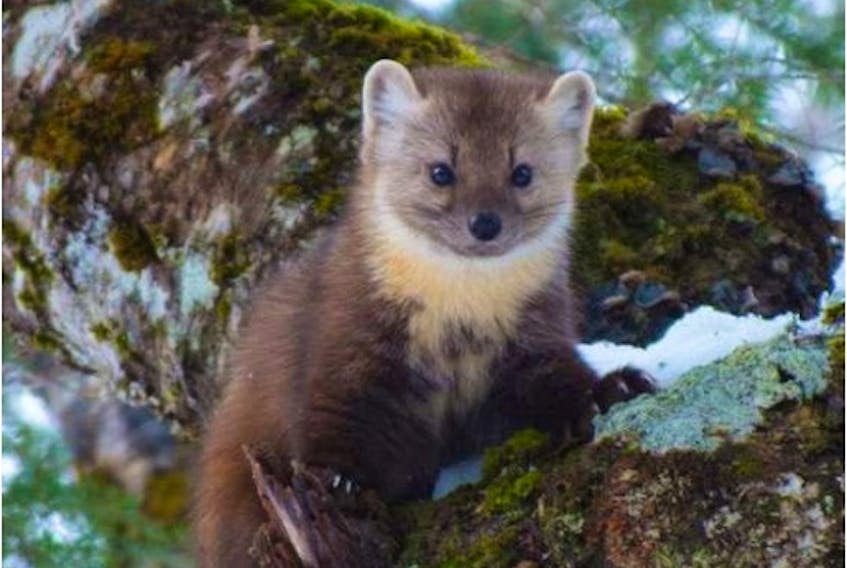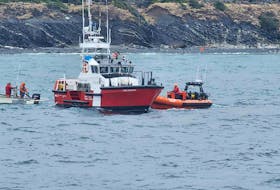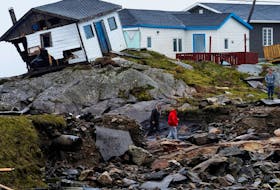As Todd Boland, a horticulturist at the Memorial University Botanical Garden, crosses Mount Scio Road and walks onto the gravel leading to the nurseries, he explains how it came to be that certain species of plants, animals and insects are endemic to — only exist in — Newfoundland and Labrador.
“What happens with endemic creatures is that they become isolated from the main population,” he said. “In Newfoundland, at one point, probably last glaciation, the water levels in the ocean would drop down, there was probably a land bridge, so any animals across North America could spread right on across. Then, after glaciation, sea levels rose up, Newfoundland became an island again — isolated.
“The plants and the animals on the island didn’t get an opportunity to meet back with their cousins on the mainland.”
And as thousands of years went by, there were slight changes in their genetics, he says.
One of those plant species is the Barren’s Willow, or salix jejuna, a small, exceptionally plain-looking but endangered shrub, which exists only on a 30-kilometre stretch of land, the limestone barrens, on the Great Northern Peninsula.
The Botanical Garden grows this species of plant in the event it should start to go extinct.
Another endemic plant is the Newfoundland Chickweed, found only in the Tablelands on the west coast.
“The population is pretty good on that one compared to the Braya and the Willow,” Boland says.
Like the Barren’s Willow, the Fernald’s Braya and the Long’s Braya are also endangered and restricted to the Northern Peninsula. And while the Botanical Garden make efforts to conserve the plant, it does not grow in the climate in St. John’s.
“We have to actually collect the seeds and we have a super-cold freezer which goes down to minus 80 degrees Celsius, and apparently you can keep the seeds almost indefinitely at those kinds of temperatures,” Boland said. “It’s almost like cryogenics.”
If the Braya should happen to disappear, this acts as a seed bank that can be used to reintroduce it to the wild.
The Brayas are starting to suffer from fungal diseases they had never been exposed to before, something Boland believes is due to the increasingly milder climate.
Also because of climate change, the Braya, which is a member of the cabbage family, have developed a complicated and macabre relationship with a certain type of moth, Boland says.
“This moth is not native to Newfoundland,” he says. “It only blows up here in spring storms, looks for a place to lay its eggs, smells out the Braya, thinking it must be just a tiny baby cabbage. The parents then die, the caterpillar does its thing, eats the Braya, goes into a pupa (cocoon stage) and then dies because it can’t survive the winter here. They’re being affected by a species of insect that can’t even survive in Newfoundland.”
Special species
A report published June 4 by Nature Conservancy Canada and NatureServe Canada aims to identify and spread awareness of endemic species across Canada.
It is called "Ours to Save" and narrows down endemic species by province and then highlights where the “hot spots” are within each province.
Dan Kraus is a senior conservation biologist with Nature Conservancy Canada, an organization that has been dedicated to identifying and protecting important places for nature since 1962.
“We’ve protected about 14 million hectares,” he says. “In southern Canada, many of those properties we actually continue to own and manage them for nature, and we have many properties on the island of Newfoundland.”
He says there is good reason to be interested in Newfoundland and Labrador with regard to endemic species.
“There’s quite a high concentration of these nationally endemic species in Newfoundland and Labrador,” he says. “The one thing I like about the report is it kind of changes the map of where the important places for species conservation are.”
Whereas a map that focuses on national species at risk would highlight areas like southern Ontario, the Prairies, parts of the Maritimes, and the Vancouver and Victoria area, by refocusing on species that only occur in certain regions of Canada, the map shines a light on areas that people wouldn’t necessarily think of as a high priority for conservation — areas like Newfoundland and Labrador, for instance.
According to the report, the Newfoundland Pine Marten is the province's most well-known endemic species. A subspecies of the American Marten, it is genetically distinct.
In a statement to The Telegram, the Department of Fisheries and Land Resources, said the population in 2007 was estimated to range between 438 and 852.
“Prior to that, numbers had been estimated less than 300,” the statement says. “The current Newfoundland marten population estimate is between 2,500 and 2,800 animals and is based on historical data and information collected through modelling exercises over the past 12 years.”
Several initiatives have been implemented to protect the population, the statement says. This includes the establishment of the Little Grand Lake Ecological Reserve and the Grover Island Public Reserve, as well as closing some wilderness areas to snaring and trapping.
Twitter: @AndrewLWaterman









